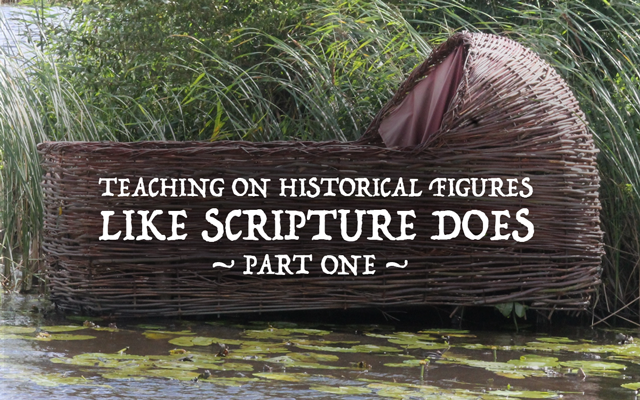Teaching on Historical Figures Like Scripture Does – Part One


There are three pillars of the scriptural view of history: God is the center character, Scripture promises a hopeful end from the beginning, and Scripture teaches history in the context of individual men and women in their relationships to God as the center character. In the next several articles, we’ll discover how to teach about historical figures, using the Bible’s biographies of men and women God used at pivotal moments during the first four thousand years of human history. How do you understand a figure according to their world rather than ours? How do you learn the heart, not just the name of a historical man or woman? How would (or did) God view the figure’s life? These are the questions we now seek answers to.
Moses: Life of a Prince, Shepherd, and Prophet
I chose this Hebraic leader for multiple reasons:
- Moses is a pivotal figure in biblical history, thus there is a vast amount of biblical commentary on him.
- The Scriptures cover the entire life of Moses, from his birth to his death.
- Not only is the political life of Moses recorded, but his relationship to God – including his moments of doubt and faith, obedience and disobedience – is also preserved for us in the biblical record. With that, let’s dive into this incredible man from ancient Israeli history.
The World of Moses
As the best historians provide, a proper understanding of a historical character begins with understanding the world he was born into. No other historical record masters this like the Bible does. Before we ever crest the nativity of Moses, the stage is already set so we are caught up to speed with the drama about to unfold. In fact, the entire previous book of the Bible is dedicated to this set-work: Genesis.
Moses’ Heritage
As a descendant of Abraham, Moses is an heir of the land of Canaan, which God chose to give to the Hebrew people. Abraham, Isaac, Jacob, and Joseph take this promise by faith, ordering their lives and deaths according to this word from the Lord. After four generations of nomadic living, the sons of Jacob choose to sojourn in Egypt – the superpower of their day – in order to avoid the devastation of famine. Four hundred years later, this family becomes a nation and a serious national security concern to Pharaoh. To suppress the possibility of uprising among so numerous a people, Pharaoh enslaves them and enforces infanticide on every Hebrew male. Like countless other ethnic groups throughout history, the Hebrews are an oppressed people. Their wails are heard by the God of their fathers and He begins singling out a deliverer.
Even in the preamble to Moses’ biography, we discover our three pillars. While highlighting the life of Moses, God is still clearly the center character. Like a fictional series, side characters come and go, but the main character or characters are always there; so it is with God and history. The end from the beginning is also declared, because God foretold the Israeli bondage in Egypt, as well as promising to bring them into the land He had sworn to give them. And the obedience and disobedience of key human figures is showcased in the lives of Pharaoh, his daughter, the Hebrew midwives and Moses’ parents.
Kenzi Knapp is a follower of Christ, homeschool graduate and student of history. A fourth generation Missourian she enjoys writing about daily life enrolled in Gods great course of faith and His story throughout the ages at her blog, Honey Rock Hills.










































